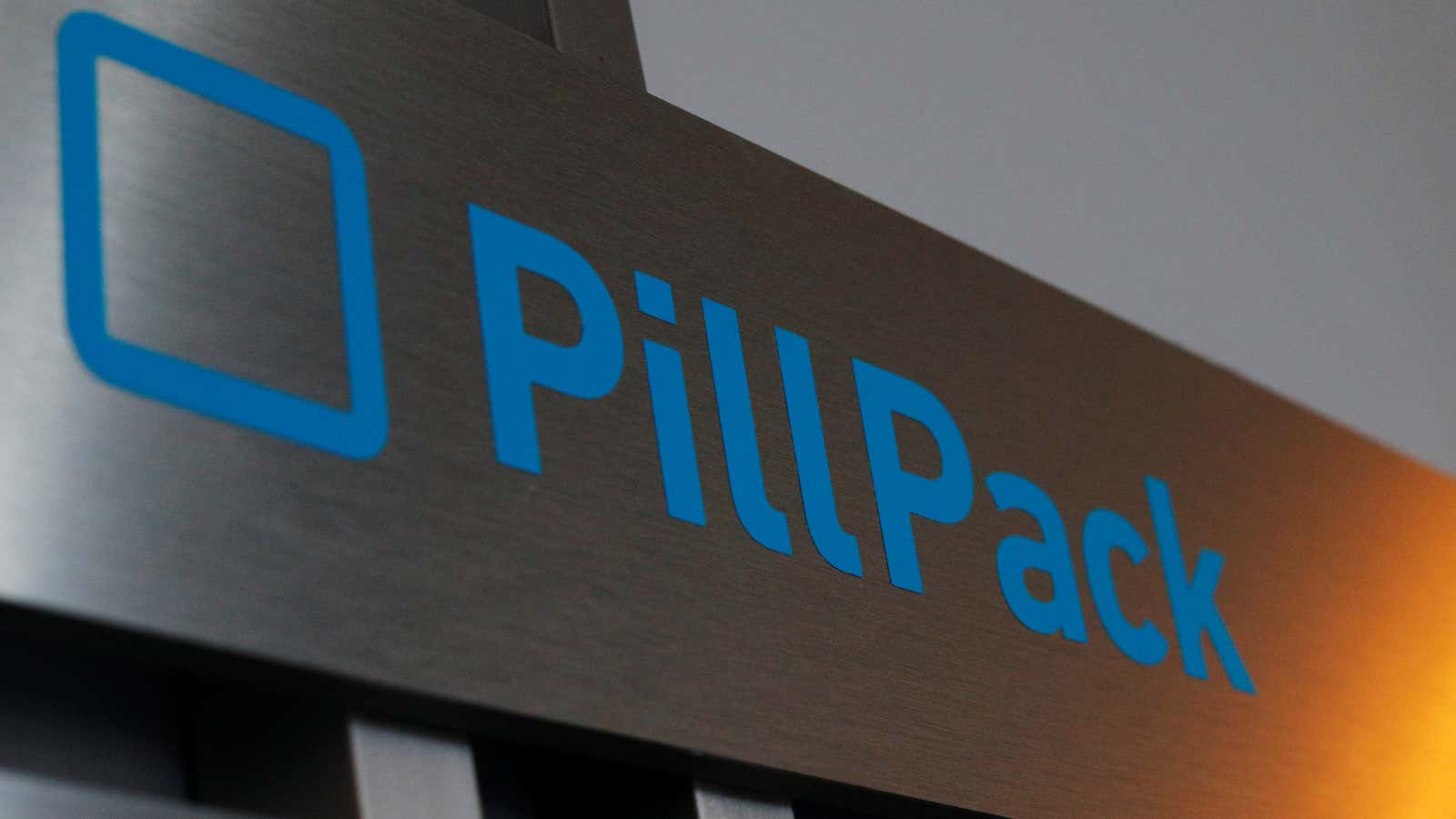For some, ordering a refill of a prescription will now be as easy as chatting with Alexa. Amazon this week announced new medication management features for customers of the Giant Eagle Pharmacy. Patients can use their Alexa voice assistant to receive reminders to take their medication or request a refill from the pharmacy.
It’s a pretty straightforward feature that just requires customers to download the Giant Eagle Pharmacy Alexa skill and link their pharmacy accounts. But it’s also a sign of what is likely ahead as Amazon prepares to enter the $42.32 billion global online pharmacy market.
“As we say at Amazon, it’s still Day 1 for Alexa and healthcare—we look forward to continuing to innovate on behalf of customers,” wrote Alexa’s Rachel Jiang in a blog post announcing the new integration.
Amazon hasn’t said publicly what it’s planning, but recent actions taken by the company suggest something big is on the horizon. Just last week, Amazon updated the branding of PillPack, the online pharmacy it acquired in 2018, to include the words “Amazon Pharmacy.” When Amazon acquired PillPack for roughly $750 million in June 2018, it was one of the company’s larger acquisitions to date, a sign that something big is likely in store for the internet pharmacy. Amazon is currently recruiting for 50 new roles at PillPack, including a pharmacy design engineer to help build automated pharmacy fulfillment centers, along with site managers, and staff pharmacists.
There are other signs that Amazon is preparing a serious entry into healthcare. Amazon last month acquired Health Navigator, a startup that creates software for online healthcare services. The startup is becoming a part of Amazon Care, its healthcare service for employees. Amazon also entered into a joint venture last year with JP Morgan and Berkshire Hathaway called Haven, which has made its mission to lower the costs of healthcare for employees of the three companies.
Amazon faces stiff competition in the pharmacy space from brick-and-mortar stalwarts like CVS along with mail-order pharmacies like Express Scripts. According to the Drug Channels Institute, the top seven pharmacies in the US (ranked by total prescription dispensing revenues) are CVS, Walgreens, the mail-order service Express Scripts, UnitedHealth Group’s OptumRx, Walmart, Kroger, and Rite Aid. Combined, these seven entities accounted for 70% of US prescription dispensing revenues in 2018.
For Amazon to corner this market, it will have to offer something that patients aren’t getting from their brick-and-mortar drugstore or their mail-order pharmacy. Faster shipping times may not be enough for retail pharmacy customers to make the switch to Amazon. Traditional drugstores are already offering same-day or next-day shipping. CVS this year partnered with Shipt to offer same-day delivery on prescription refills; Costco is testing same-day delivery via Instacart for prescriptions in Washington and California; and Walgreens offers same-day delivery through FedEx. PillPack sends patients their medication in scheduled monthly shipments, with refills arriving before customers need them.
But cheaper drugs could compel more customers convert to Amazon’s pharmacy offerings. CNBC reported that Amazon is in talks with insurance companies to move forward with direct contracting deals for PillPack. This would essentially allow Amazon to contract directly with health plans and employers to sell prescription drugs. Amazon through PillPack has been courting insurance companies, including Blue Cross Blue Shield, according to details of a lawsuit that CVS filed against Amazon in April. Analysts believe that Amazon negotiating directly with the health insurance industry will allow the company to demand price concessions on prescription drugs. If Amazon is able to lower drug prices, it has a chance to potentially uproot the $3 trillion US healthcare industry.
